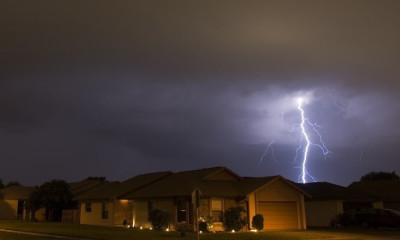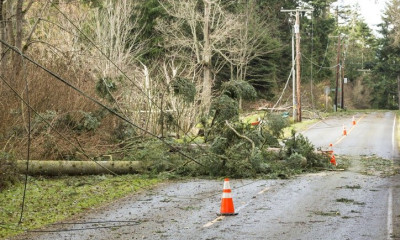3 Tips for Minimizing Property Damage from Ice Accumulation
Our knowledgeable public adjusters offer three simple tips to help you prevent ice and water damage to your home, business, and commercial properties this winter.
How to Prevent Water Damage:
Tip #1: Don’t let ice accumulate on your gutters or along your roof.
A wall of icicles stretching from roof to ground are a common occurrence for many New York residences after a winter storm. Yet, this situation is a major cause for concern.
Icicles may look like a nice touch to the winter scenery as they glitter in the sun; however, these frozen formations can grow to be quite heavy and are oftentimes sharply tipped. Not only will their weight pull down on and damage gutters, but they can also pose a huge risk for any person, pet or car that may be idling underneath them.
Winter water damage can also happen when temperatures warm and melt ice (and icicles) to create ice dams that seep under your roof, into your insulation, and down your ceilings and walls. This accumulating water can refreeze and cause cracks or drive the production of mold.
Steps you can take to avoid property damage:
Start by carefully removing small icicles before they amass into larger spears.
Using a broom handle, yardstick, or anything else that can extend your reach, gently knock down smaller icicles that have started to gather around windows, gutters, and at the corners of your roof.
For larger icicles, carefully (without standing directly underneath) tap around their base to dislodge them. Use extra caution if you need to use a ladder — metal surfaces in the winter may be extra slick!
If the ice buildup on your roof is too large to remove, cut several channels along the eaves to allow the water that is dammed above the ice to drain out.
Remove any remaining snow and ice with a broom and do this frequently. Be mindful not to damage your shingles or gutters by hitting and/or pulling on ice accumulations too hard.
If your icicles have already accumulated too much and pose a major threat, call a contractor to safely remove the buildup to avoid injury to yourself and damage to your property.
Tip #2: Strategically remove the ice and snow that’s now on the ground.
After you’ve carefully removed the ice accumulation, you’ll most likely have a decent amount of snow and ice now on the ground around the foundation of your home or business. DO NOT leave it there! Once the sun and warmer temperatures arise, all of that snow and ice will melt and can potentially cause flood damage.
Instead, use a shovel to remove the ice and snow deposits away from your building's foundation and place them in a location of good drainage where melting water runoff flows away from your property structures.
Tip #3: Check trees/tree-limbs on your property for ice damage.
Your gutters are not the only objects weighed down and damaged by ice. Trees and their limbs also accrue ice and can break from its weight, which could mean a disastrous situation for your roof, car, or anyone who may be underneath these branches.
Repeat ice removal procedures as you would for your gutters in Tip #1 for any tree limbs on your property. You can visually check, too, to make sure there are no limbs loosely hanging down from trees that could lead to wind damage during a storm. Carefully remove these branches using a limb saw, or (if they are small and closer to the ground) stand to the side of them and knock them down with a broom or shovel.
Loose branches weighed down by snow and ice can cause damage to more than just your roof; falling branches can also damage powerlines. As you walk around checking that the branches hanging around your property are intact, also keep an eye out for any powerlines that may be down. Contact your power company or telephone company immediately if you suspect any signs of damage such as loose or broken wires.
Our public adjusters wish you a safe winter using our three tips to proactively keep you out of harm's way from ice and water damage. At Adjusters International / Basloe, Levin & Cuccaro, our expert team of public adjusters is here to help you through any type of homeowner or commercial property damage. For more information, contact us today.













